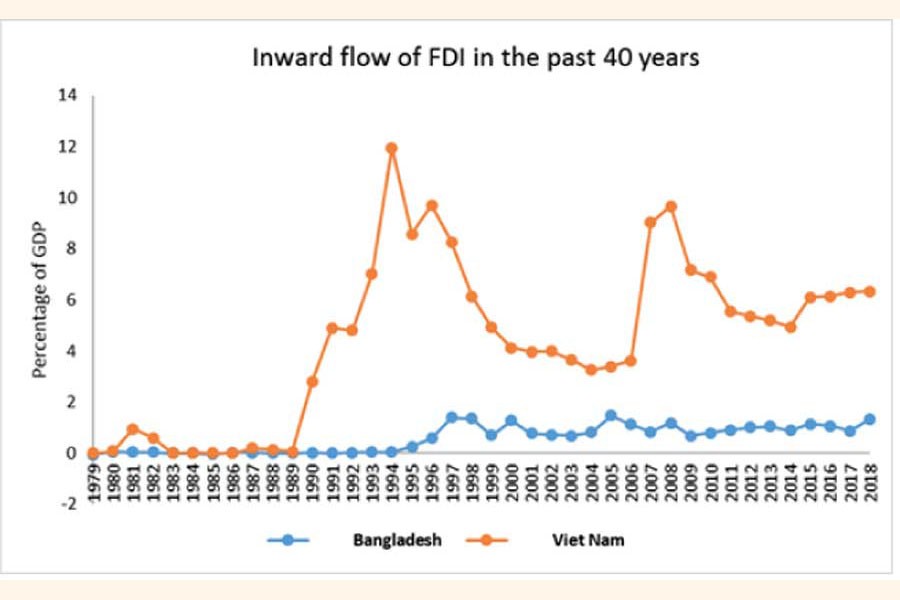Foreign direct investment (FDI) has been one of the major driving forces of growth, industrialisation, economic diversification and structural transformation for many countries. For this reason, most of the industrial policies of developing a developed countries have begun to heavily rely on attracting investment. However, according to the World Investment Report of 2019, the recent global policy climate for trade and investment has not been as favourable compared to the previous successful periods of export-led growth and development. There has been a declining trend in cross-border productive investment. Last year, global flow of foreign direct investment fell by 13 per cent to US$ 1.3 trillion. This represents the lowest level since the global financial crisis and underlines the lack of growth in international investment in this decade.
What requires our critical review is the fact that under these circumstances there has been an explosive growth in the use of special economic zones (SEZs) as a key policy instruments for attracting investment for industrial development. According to the calculation of the United Nations Conference on Trade and Development (UNCTAD), up to now more than 5,400 SEZs have been developed worldwide and at least 500 more are in the pipeline for the coming years. Even though, in the past, many SEZs have played a key role in promoting structural transformation and greater participation in global value chains, there have also been many examples of zones that did not attract the anticipated number of investors and became costly failures. Along with a more difficult trade and investment climate, in recent years, SEZs face other challenges as well. For example, it is highly likely that the fourth industrial revolution might erode the importance of low labour costs, which traditionally has been one of the major competitive advantages of most SEZs. Thus, SEZs will need to take into consideration these trends in their targeted industries and formulate effective strategies to adapt accordingly.
Bangladesh, like many other developing countries has a liberalised industrial policy which focuses on export oriented and private sector led growth. Bangladesh also offers a wide variety of generous fiscal incentives and facilities to attract foreign investors. At the same time, the focus of Bangladesh's growth approach also evolved around the creation of higher number of SEZs. However, given the current global financial and geo-political scenario, solely focusing on the creation of SEZs might not be an optimal strategy. This is because Bangladesh still has a number of impediments when it comes to attracting a steady inflow of FDI. On top of that, Bangladesh also has a long way to go in terms of amplifying the overall capacity that is needed to fully appropriate the benefit of FDI inflow. This especially holds good when it comes to the scenario of competition between Bangladesh and some of its competitors.
In recent times, Vietnam has emerged as one of the most successful Asian countries in attracting large volume of investments. Despite having identical trend of net FDI inflow (percentage of gross domestic product or GDP) in the late eighties, the scenario of Bangladesh and Vietnam altered drastically in later years. Vietnam has achieved successful implementation of FDI policy by opening up its economy at planned and successive stages. The reforms and implementation of investment laws helped to create a consistent legal system and created a common playground for foreign invested enterprises, state-owned enterprises and domestic private enterprises. The reforms included preferential treatment of foreign investment, decentralisation, reduction of bureaucratic red tapes. In addition, the key advantage that Vietnam weighed on further is the cheap yet relatively skilled labour force. While Bangladesh has maintained a steady investment of around 2 per cent or lower in both health and education, Vietnam has managed to spend around 4.0 per cent of GDP in these sectors. From the Vietnamese experience, thoughtful reform in health and education assisted in realising the potential of FDI inflow.
Though, the FDI inflow in Bangladesh has gradually grown over the years, the country is still lagging far behind. In the last fiscal year, Bangladesh received its highest ever amount of FDI; according to the central bank data, net FDI in 2018-19 stood at $3.88 billion as against $2.58 billion in the previous year. This is because there has been a one-time investment of $1.47 billion in the form of acquisition of Akij Group's tobacco business by the Japan Tobacco Inc. Nevertheless, this investment is focused on the domestic market and thus there is limited scope of recruiting additional workers. Therefore, experts worry that this sudden rise in FDI may not necessarily translate into a long term positive impact for the country.
Given the current set of challenges, it is imperative that Bangladesh prioritise on adopting and implementing appropriate reforms to bring about a steady inflow of FDI. At the moment, the country is focusing on advancing its position in the existing global indices of business climate. On one hand, this timely measure certainly deserves appreciation. On the other hand, we must also collectively look at the bigger picture. Because, ultimately it is the cumulative human capital of a country that largely determines true competitiveness. Consequently, if Bangladesh wants to both attract and reap the full benefit of increased FDI, it must first and foremost invest in its people. Disorderly and short term measures are likely to take Bangladesh only a few steps ahead. In order to withstand the competitive reality of an increasingly globalised and volatile world, long term strategic planning is required to scale up sustainable inflow of investments.
Rafiqua Ferdousi is Research Economist, SANEM. [email protected]
Eshrat Sharmin is Research Associate, SANEM. [email protected]


